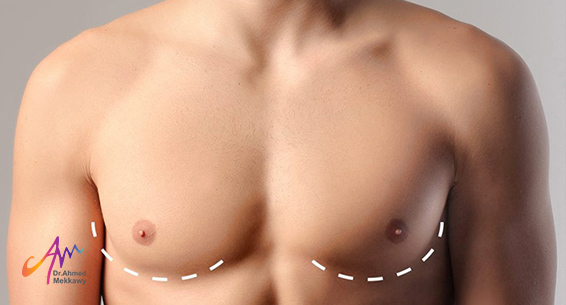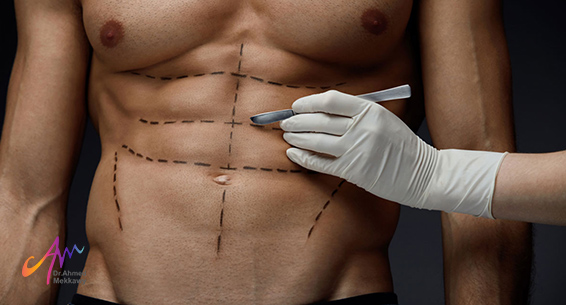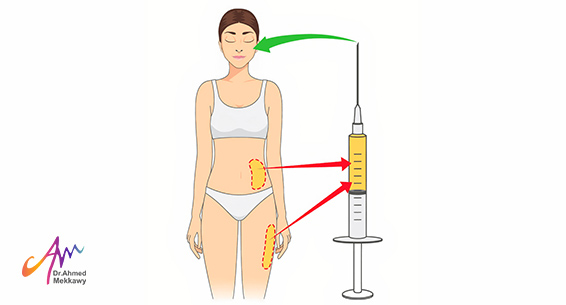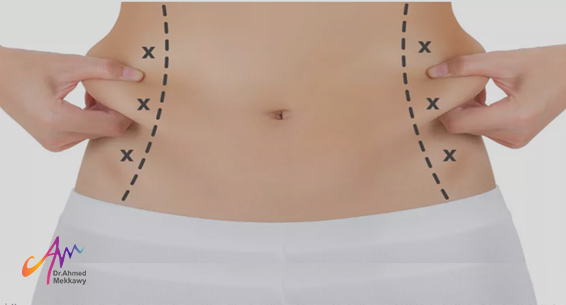Treatment of Gynecomastia

Treatment of Gynecomastia
Gynecomastia is a phenomenon that causes a lack of self-confidence in men. So, how can this problem be treated? And how do you know if you have its symptoms? Let's learn about gynecomastia and everything related to it in this article.
Gynecomastia in Men:
Gynecomastia, or the enlargement of the breast tissue in men, is caused by an imbalance between estrogen and testosterone hormones in the body, whether in boys or men. Gynecomastia can affect one or both breasts, and sometimes the enlargement is uneven. It can occur in newborns and boys during puberty as a natural result of hormonal changes in the body, but it usually disappears over time.
Gynecomastia is not a serious condition, and it can usually be lived without worrying about any risks. However, some patients may experience mild pain in the chest area and feel embarrassed about this condition. Some cases do not require gynecomastia treatment as it disappears over time, but others need to be treated before they develop and become more noticeable.
Symptoms of gynecomastia:
• Enlargement and swelling of the breast area in men.
• Presence of softness in the breast area.
• A feeling of swelling.
• Feeling some pain in the chest area or around it.
• Appearance of nipple discharge.
• Presence of lumps in the chest area.
Causes of gynecomastia in men:
Natural hormonal changes:
Estrogen and testosterone hormones are primarily responsible for determining the characteristics of each gender. However, when the balance between these hormones is disrupted in men, gynecomastia may occur. Testosterone is responsible for male characteristics such as muscle formation and body hair growth, while estrogen is responsible for female characteristics such as breast development. Despite the belief that estrogen exists only in females, it also exists in males at lower levels. When the body's hormones become imbalanced due to decreased testosterone secretion or its blocking effect, estrogen affects the breast area in men, causing gynecomastia.
• Gynecomastia in newborns: More than half of newborn boys experience gynecomastia as a result of their hormones interacting with the mother's hormones before birth. However, this condition disappears after about three weeks of birth.
• Gynecomastia during puberty: Some changes occur in the body during puberty, especially in hormones. Gynecomastia is a common occurrence in boys during this period, and it usually disappears within a period ranging from six months to two years.
• Gynecomastia in men: This phenomenon occurs again in men between the ages of 50 and 69. At least one in four men in this age range is affected by gynecomastia.
Many medications can lead to the development of gynecomastia:
• Antiandrogens that address prostate enlargement, prostate cancer, and other related conditions.
• Steroids that stimulate muscle growth when taken without medical supervision can disrupt the body's hormonal balance.
• HIV/AIDS medications can cause the development of HIV-positive-related immune deficiency.
• Antidepressant, anti-anxiety, and antipsychotic medications.
• Ulcer medications.
• Chemotherapy for cancer treatment.
• Medications used for heart disease.
• Medications facilitating bowel movements.
• Substances such as alcohol and drugs like marijuana, heroin, and methadone.
There are other diseases and causes that can disrupt hormones and lead to gynecomastia, including:
• Hypogonadism: A condition that affects the reproductive glands, leading to a decrease in testosterone secretion.
• Aging: Hormonal changes occur naturally with aging, especially in obese men.
• Thyroid gland: Hyperthyroidism causes increased secretion of thyroxine hormone.
• Kidney failure: Around half of individuals undergoing kidney failure treatment may experience gynecomastia.
• Liver diseases and cirrhosis: Hormonal imbalances resulting from liver problems and medications used to treat them can lead to gynecomastia.
• Malnutrition and general weakness: When your body doesn't receive adequate nutrition, testosterone levels decrease, leading to hormonal imbalances. Treating malnutrition helps restore hormone levels.
• Herbal products: Some products containing herbs and natural substances like lavender and certain oils used in various shampoos have been related to the appearance of gynecomastia.
Gynecomastia complications:
The complications of gynecomastia include physical appearance changes that can lead to decreased self-confidence and other psychological problems.
Preventing gynecomastia in men involves controlling factors such as:
• Avoid drug and alcohol use.
• Consult a doctor before taking any medications or supplements.
• Discuss with a doctor the use of certain medications for chronic conditions and ask for advice for avoiding gynecomastia while taking them.
How is gynecomastia in men diagnosed?
First, the doctor will ask you some questions to determine your health condition and family medical history. Then, a comprehensive physical examination will be conducted, and you may be asked to undergo certain tests and screenings, such as blood tests and imaging scans.
Treatment for gynecomastia in men:
Some cases of gynecomastia resolve over time by addressing the underlying causes, but other cases may require treatment or surgical intervention. The appropriate treatment depends on your condition and the degree of gynecomastia you're experiencing, as determined by the doctor. Medications used to treat breast cancer may also be used for gynecomastia treatment, but this approach is considered unsafe and not guaranteed. Doctors prefer surgical intervention for treating all degrees of gynecomastia, which may involve removing glandular tissue, liposuction for eliminating excess fat in the chest area, excising excess skin to treat sagging, reshaping the chest, and repositioning the nipple.
Treatment of gynecomastia in men and liposuction using VASER:
VASER liposuction is the most advanced technique for treating gynecomastia with minimal surgical intervention. The process of VASER gynecomastia removal is as follows:
• First, the chest area is injected with a saline solution and local anesthesia before starting the procedure.
• Then, the doctor makes a small incision around the nipple, which is difficult to notice.
• Through this incision, he inserts a VASER probe to emit ultrasound waves that dissolve the accumulated fat around the chest, converting it into a liquid that can be easily suctioned from the body.
• Then a liposuction tube is inserted instead of the VASER probe.
• Finally, the incision is closed with a few cosmetic stitches, and the wound is covered with medical dressings and a compression garment.
The cost of gynecomastia treatment with VASER:
The cost of VASER gynecomastia treatment varies depending on each case and several factors, such as:
• The severity of gynecomastia.
• The amount of fat and sagging is to be addressed.
• The type of anesthesia used.
It's also important to consider the costs of accommodation and travel if you are coming from another country. However, the cost of VASER gynecomastia treatment with Dr. Ahmed Mekkawy typically starts at $1400 and varies based on the previously mentioned factors.
Recovery period after VASER gynecomastia surgery:
You can leave the hospital immediately after the VASER liposuction procedure and start recovery at home. In most cases, you may need only two to three days before returning to your daily activities. During this period, avoid strenuous physical activity, quit smoking, and follow a healthy diet that promotes good recovery. The doctor's instructions during the recovery period may include wearing the compression garment to prevent fluid accumulation, massaging the chest area for at least half an hour daily to reduce swelling and bruising, and starting walking as soon as possible to reactivate blood circulation in your body.
Results of gynecomastia surgery with VASER:
The results begin to stabilize permanently within approximately six months. During this period, the results gradually appear and improve. Swelling subsides, bruises disappear, and the results last as long as you can maintain your weight without any sudden increase. Also, avoid the causes of gynecomastia that initially led to its appearance.
Getting rid of gynecomastia has become easier without the need for extensive surgical intervention and with minimal side effects, thanks to the VASER liposuction technique. For more information about gynecomastia treatment in men and to book a consultation with Dr. Ahmed Mekkawy, a plastic surgeon and body sculpting consultant, contact us.
This content has been reviewed by Dr. Ahmed Mekkawy, a consultant in cosmetic surgery, body contouring, and natural hair transplantation.


